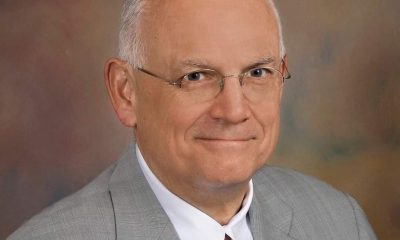a&e features
Retail king
Macy’s CEO Jeff Gennette on coming out, AIDS, retirement — and what’s next
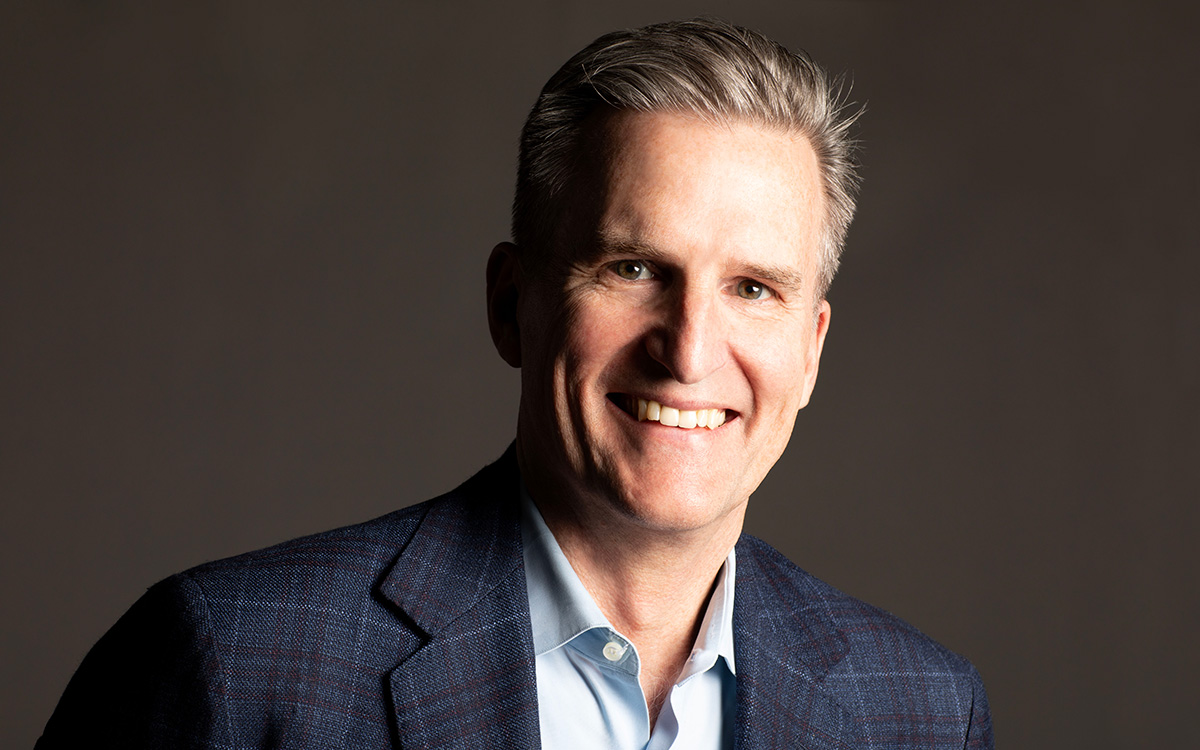
Jeff Gennette’s personal and professional journey is a unique one.
Coming out in 1983 to supportive parents. Finding community as an openly gay man in ‘80s San Francisco, watching scores of friends die but ultimately surviving the AIDS plague. Embracing his sexual orientation professionally and excelling as a result. Cultivating a 33-year relationship, marrying, and having a child when adoption and surrogacy were nearly impossible for gay couples. Spending an entire career with the same company and retiring 40 years later as one of the few openly LGBTQ CEOs of a Fortune 500 company.
And not just any company making widgets, but Macy’s Inc., an iconic brand perhaps best known for bringing all of America — red and blue — together each Thanksgiving morning for 97 years at its spectacular parade kicking off the holiday season.
Now, after 40 years at Macy’s, including seven as CEO, that began with a management training program in 1983, Gennette, 62, is sitting down exclusively with the Washington Blade in a conference room in New York and reflecting on all the progress he’s seen the country make on LGBTQ rights and insisting he wants to stay involved in the fight.
“LGBTQ rights are under attack now and I want to be in that arena — and not as a leader of a public company,” he said when asked about his future plans. “Department store retail is not for the faint of heart and my husband and I have been so fortunate. We know our experience is not everyone’s experience and we’re in a position to be able to do something.”
When pressed, Gennette said he’s not yet sure what that looks like but, “I want to be in the fight,” perhaps in the philanthropic and donor space. He and husband Geoff Welch plan to take a few months to think through what’s next and how they might play a role in the LGBTQ movement. “That’s a clear passion of mine,” he said.
Gennette cites two professional accomplishments of which he’s most proud: leading Macy’s out of the retail-killing pandemic with a stronger balance sheet than before COVID; and helping to create the various DEI programs that foster an inclusive, healthy culture at the sprawling company.
“I get a lot of energy from that and will take that into my next chapter.”
His last day at Macy’s will be Friday, Feb. 2 and it’s fitting that his final appointment on his final week is to attend the Human Rights Campaign’s Greater New York Dinner on Saturday where he will be honored with the HRC Corporate Visibility Award for his “unwavering dedication to bolstering LGBTQ+ inclusivity in business.”
“As the LGBTQ+ community navigates a national state of emergency and faces an onslaught of targeted attacks, having the representation, leadership and support of such dedicated LGBTQ+ advocates fortifies our strength in this fight for freedom and equality,” said Human Rights Campaign President Kelley Robinson in a statement announcing Gennette’s award.
Despite the accolade, Gennette seems uncomfortable with the term “activist” and never would have predicted that he would become an important figure for LGBTQ visibility in corporate America.
“I’m an introvert,” he said, “I never saw myself as a visible role model. My husband was more of an activist than I was; my head was down doing my work at Macy’s.”
Figures like Gennette have become accidental activists, helping to open minds — and board rooms — to future LGBTQ workers and executives who may never fully understand the challenges faced by previous generations. Chief among those challenges, perhaps, was AIDS. Gennette talks solemnly about those years in ‘80s San Francisco.
“When you lived in the Castro through the ‘80s, it was difficult; you had a community that was just being decimated by the scourge of AIDS and losing friends,” he recalls. “My husband lost his first two lovers to AIDS. Many people I worked with at Macy’s were lost to AIDS, you just couldn’t get away from it. It was a difficult time for all of us.”
Gennette added that living through the worst of AIDS in one of the hardest-hit cities ultimately proved cathartic because of the activism that resulted.
“AIDS shaped my perspective on how a community can come together and influence local, state, and national lawmakers,” he said. “It ushered in a lot of political activity.”
That activity triggered a wave of progress, from affirming state legislation, to out political leaders and celebrities, and ultimately to our first federal legal protections and eventually marriage equality. But the last two years have demonstrated the fragility of all that progress as state legislators across the country have introduced hundreds of bills aimed at rolling back our progress. Our right-wing enemies have tried everything from banning drag shows and LGBTQ-themed books to barring affirming healthcare for trans youth. There’s even a draconian “Don’t Say Gay” law now on the books in Florida that’s reminiscent of Vladimir Putin’s ban on “promoting homosexuality.” Not content with attacking only the LGBTQ community, Florida in January banned all DEI activities at state-funded colleges and universities. Welcome to 2024 America.
How does Gennette view these attacks and setbacks, especially given his own legacy of expanding DEI programs at Macy’s?
“Forward momentum always has consequences and the pendulum always swings back,” he warns. Gennette cites the overturning of Roe v. Wade as an alarming development in efforts to roll back settled law. “This idea about equality I don’t think we’re ever done with it,” he said. “What’s happening with the trans community is a testament to that. We need to stay organized and young people have to be vigilant about that.”
His advice to young people embarking on their careers and applying for their first corporate jobs is to be out and authentic. “You’re never going to show up in your full potential if you don’t. … It’s going to take courage.”
Gennette found the courage to come out in the early 1980s when such pronouncements could mean the end of your career and estrangement from family. He was 19 years old and a sophomore in college with conservative but supportive parents. “I had a lot of anxiety about it, I said, ‘I‘m gay,’ — and my mom said, ‘You don’t mean happy.’” His parents were accepting but lamented the presumed loss of grandchildren. Years later, Gennette’s mother would assist in locating a surrogacy program that was open to gay couples, leading to the birth of daughter Judith in 2000.
His mother passed away last October and he describes her as his hero and “most seminal figure in my life — she was a kick-ass pioneer” who carried the PFLAG banner along with Gennette’s father in the San Francisco Pride parade.
Meanwhile, back at Macy’s, Gennette came out to colleagues in his training program. One assistant buyer warned him that “people are talking” and that identifying as openly gay could be a “career killer.” But Gennette ignored the warnings and came out to his boss.
“It was a big relief to acknowledge that to my boss,” he said. “It was like a weight lifted off my proverbial shoulders. I didn’t see senior executives that were gay, but I did see myself in the culture [of Macy’s] … It was a company that did right by disadvantaged communities even then in 1984.”
Gennette’s experience wasn’t the norm for corporate workers in the 1980s (or even today) and he acknowledges that the retail sector was more accepting. And Macy’s, in particular, proved a progressive home and played a key role in shaping the kind of executive he would later become.
“I don’t know that I would be a CEO today if not for that formative experience,” he said. “You’re on the pulse of pop culture and fashion and being gay was a part of my identity, but it wasn’t my full identity and I give Macy’s a lot of credit. I don’t know that I would be where I am if I’d been at a different company.”
Indeed different companies are responding to the recent attacks on the LGBTQ community in different ways. Bud Light faced a boycott last year after a promotional stunt with transgender TikTok star Dylan Mulvaney caught the intolerant eye of Kid Rock. Sales plummeted and parent company AB InBev’s stock fell 20 percent. The company responded by distancing itself from Mulvaney, which led to a boycott call from the LGBTQ community. Meanwhile, retailer Target faced a boycott over its wide selection of Pride month merchandise. The company responded by moving Pride merchandise from displays at the front of stores to less prominent locations in the back, which triggered criticism from LGBTQ advocates.
Gennette said the Target incident had no impact on Macy’s, which offered its own Pride merchandise despite the boycott risk.
“It’s when you flip and succumb to pressure that you get yourself sideways,” he said, noting that, “It always comes back to your core values. We had Pride merchandise at the front of our stores and we were participants in Pride parades around the country.”
Further, Macy’s executives are always paying attention to what’s happening politically and culturally in case they need to respond. When the Dobbs decision overturning Roe v. Wade was leaked, Macy’s decided it would support any employees who had to travel out of state for abortion care. Other recent events have prompted internal discussion and response.
“George Floyd put us on notice about being vocal about our internal programs and how you use your CEO voice to be true to what you’re doing internally,” Gennette said. “With respect to Macy’s, our core values of inclusion and giving back, we’re always looking for a more inclusive future for all. We do a good job of taking the pulse of where things are — conservative and liberal voices — and anticipate what could be coming that we need to react to.”
That commitment manifests in several marquee DEI programs at Macy’s, including S.P.U.R. Pathways: Shared Purpose, Unlimited Reach, which the company describes as a “multiyear funding program to advance entrepreneurial growth, close wealth gaps, and shatter systemic barriers faced by diverse-owned and underrepresented businesses.” The program, created in partnership with Momentus Capital, has invested $30 million in underrepresented businesses and entrepreneurs, Gennette said. “We’re not taking our foot off the gas.”
The proactively progressive approach of Macy’s begs the question: Do we need more CEOs from underrepresented communities? And why aren’t there more openly LGBTQ CEOs of Fortune 500 companies?
Gennette is confident that the future will bring much more diversity to America’s board rooms and C-suites.
“We’re at the beginning of our journey still,” he said. “There will be more [out CEOs] in the coming years. I have a lot of interest in increasing LGBTQ presence in board rooms. There’s so much talent out there ready to become the next CEOs, it’s something I think about — how can I contribute in retirement to help on this question?”
Before he jumps into a role in LGBTQ advocacy, Gennette plans to take some time off with husband Geoff. The two met at Gennette’s 30th birthday party in California.
“He showed up at the party and maybe it was the blue Speedo or the sonorous voice but we started dating from that point.”
The two committed to each other in a 1995 ceremony, long before the advent of marriage equality. They’ve been together ever since, living in five states and nine cities.
At the end of our conversation, Gennette agreed to a game of rapid fire.
• On the future of American malls, Gennette predicts there will be fewer of them but that they will be vibrant and offer a different mix of hospitality, eateries, and retail. “They will stand the test of time.”
• On Macy’s collaborator Martha Stewart, Gennette describes her as “a huge talent … authentically a purveyor and tastemaker on so many subjects. It comes across in all her work and programming. She’s an inspiration … Macy’s had a rocky relationship with her over the years but she has been an icon.”
• On Cher, who performed at last year’s Macy’s Thanksgiving Day Parade, Gennette said “she’s awesome, lovely, friendly, open to her fans and is authentically herself. She was aces.”
• On what keeps him up at night, Gennette cited his 24-year-old daughter’s wellbeing. “She was interning in a company and got a job offer so I’m resting easier now. She’s ready to strike out on her own, she’s on her way.”
• And on his successor as Macy’s CEO, Tony Spring, Gennette calls him “a fantastic leader; he’s ready and has the right intelligence, experience, judgment, and temperament to take Macy’s to the next series of growth. He has the chance to do what he did for Bloomingdale’s to Macy’s.” He noted that Spring has spent 10 month transitioning into the new role and that he has “the team and strategy and support of the board.”
The Macy’s board recently rejected a $5.8 billion takeover bid after laying off more than 2,300 employees and closing five stores. Shares of Macy’s closed last week up 4 percent after a report that private equity firm Sycamore Partners is interested in taking Macy’s private. Gennette declined to comment on those recent developments but he remains bullish on the future for Macy’s.
“Macy’s serves a big tent — red states, blue states — everyone in America has been touched by someone who’s gay and that activism is changing hearts and minds,” he said. “We serve a diverse nation and standing for that is good for profitable business.”
a&e features
Peppermint thrives in the spotlight
In exclusive interview, she talks Netflix show — and the need to resist Trump’s attacks
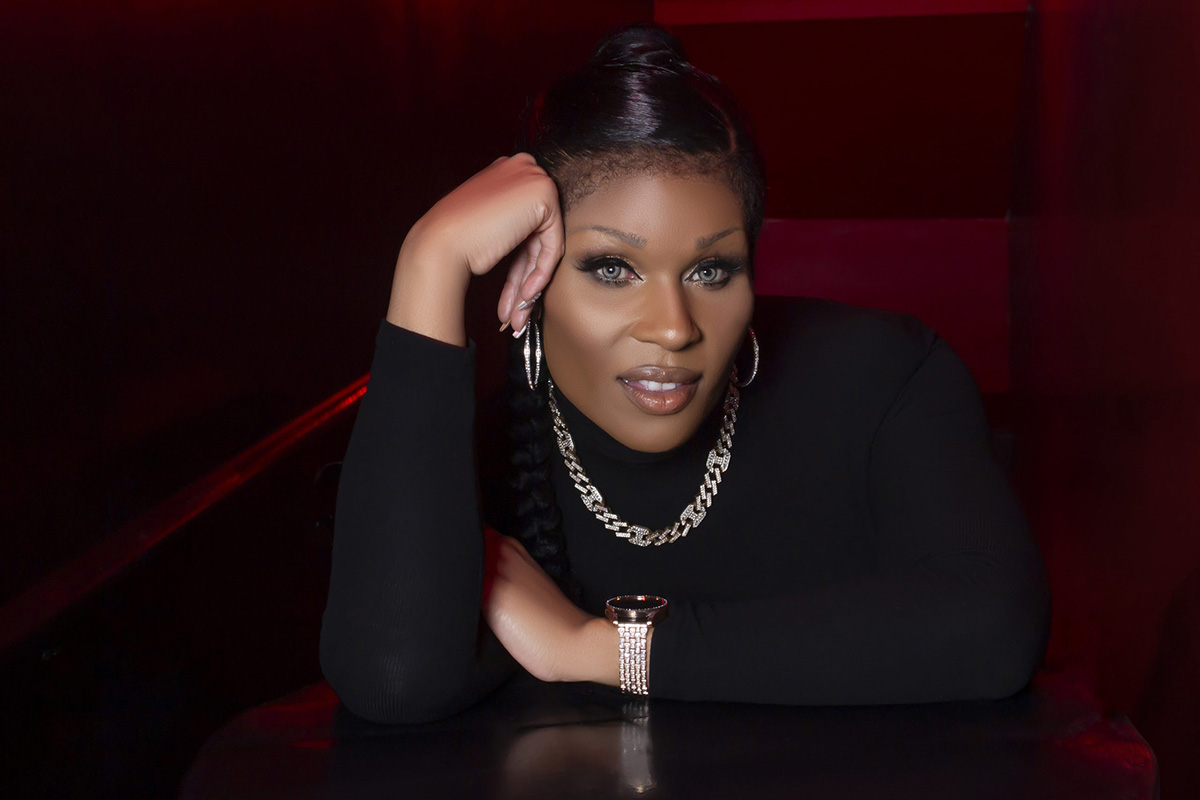
As an entertainer, there’s not much that Peppermint hasn’t done. She’s a singer, actor, songwriter, reality TV personality, drag queen, podcaster and the list goes on. Most importantly, as an activist she has been an invaluable role model for the trans, queer, and Black communities.
She’s a trailblazer who boasts an impressive list of ‘firsts.’ She is the first out trans contestant to be cast on “RuPaul’s Drag Race” (Season 9). She is the first trans woman to originate a principal musical role for Broadway’s “Head Over Heels.” She was also the first trans woman to compete in the runaway hit series “Traitors,” on Peacock, and she is the ACLU’s first-ever Artist Ambassador for Trans Justice. Her accolades are a true testament of the courage it took for Peppermint to live her authentic self.
We caught up with Peppermint to chat about her activism, taking on bigger roles on screen, our current political and social climate and life beyond the lens. For Peppermint, coming out as trans was not just a moment of strength—it was a necessity.
“It unfolded exactly as I had imagined it in terms of just feeling good and secure about who I am. I was in so much pain and sort of misery and anguish because I wasn’t able to live as free as I wanted to and that I knew that other people do when they just wake up. They get dressed, they walk out the door and they live their lives. Being able to live as your authentic self without fear of being persecuted by other people or by the government is essential to being healthy,” Peppermint tells the Blade in an exclusive interview.
“I was not able to imagine any other life. I remember saying to myself, ‘If I can’t imagine a life where I’m out and free and feeling secure and confident and left alone, then I don’t even want to imagine any kind of a life in the future,’” says Peppermint.
Recently, Peppermint returned for season 2 of Netflix’s comedy “Survival of the Thickest.” She added some spice and kick to the first season in her role as a drag bar owner. This time around, her character moves center stage, as her engagement and wedding become a major plot line in the show. Her expanded role and high-profile trans representation come at just the right time.
“It’s the largest acting role I’ve ever had in a television show, which my acting degree thanks me. It feels right on time, in a day where they’re rolling back trans rights and wanting to reduce DEI and make sure that we are limited from encouraging companies, corporations, industries, and institutions from not only featuring us, but supporting us, or even talking about us, or even referencing us.
“It feels great to have something that we can offer up as resistance. You can try to moralize, but it’s tougher to legislate art. So it feels like this is right on time and I’m just really grateful that they gave me a chance and that they gave my character a chance to tell a greater story.
Peppermint’s expanded role also accompanies a boom in queer representation in Black-powered media. Networks like BET and Starz and producers like Tyler Perry, are now regularly showcasing queer Black folks in main story lines. What does Peppermint think is fueling this increased inclusion?
“Queer folks are not new and queer Black folks are not new and Black folks know that. Every Black person knows at least one person who is queer. We are everywhere. We have not always been at the forefront in a lot of storytelling, that’s true, and that’s the part that’s new. It’s Hollywood taking us from the place where they usually have held us Black, queer folks in the makeup room, or as the prostitute, as an extra—not that there’s anything wrong with sex work or playing a background performer. I’ve played the best of the hookers! But those [roles] are very limiting.
“Hollywood has not historically done and still does not do a very good job of, including the voices of the stories that they make money [on]. And I think they’re realizing [the need] to be inclusive of our stories and our experiences, because for a long time it was just our stories without our actual experiences. It’s also exciting. It’s dramatic. It makes money. And they’re seeing that. So I think they’re just dipping their toes in. I think that they’re going to realize that balance means having us there in the room.”
Peppermint’s activism is tireless. She has raised more than six figures for prominent LGBTQ rights groups, she continues to speak around the nation, appears regularly on major media outlets addressing trans and LGBTQ issues and has been honored by GLAAD, World of Wonder, Out magazine, Variety, Condé Nast and more—all while appearing on screen and onstage in a long list of credits.
Now, under the Trump administration, she doesn’t have time to take a breath.
“I wouldn’t be able to do it if it weren’t second nature for me. Of course, there are ups and downs with being involved with any social issue or conversation and politics. But I am, for now, energized by it. It’s not like I’m energized by like, ‘Ooh, I just love this subject!’ right? It’s like, ‘Oh, we’re still being discriminated against, we gotta go and fight.’
“That’s just what it is. I get energy because I feel like we are quite literally fighting for our lives. I know that is hyperbole in some regards, but they are limiting access to things like housing, healthcare, job security and not having identification. Passport regulations are being put in a blender.”
Peppermint also mentions her thoughts on the unfair mandates to remove trans service members and revoke the rights and resources from the veterans who worked their whole lives to fight for this country.
“When you strip all these things away, it makes it really difficult for people to have a life and I know that that is what they’re doing. When I look around and see that that is what is at stake, I certainly feel like I’m fighting for my life. And that’s energizing.
“The only thing that would be the most rewarding besides waking up in a utopia and suddenly we’re all equal and we’re not discriminating against each other—which probably is not happening this year—is to be able to be involved in a project like this, where we can create that world. It’s also being built by people who are a part of that story in real life and care about it in real life.”
Peppermint is clear on her point that now is the time for all of the letters of the LGBTQ community to come together. Everyone who is trans and queer should be joining the fight against the issues that affect us all.
“Just trust us and understand that our experiences are tied together. That is how and why we are discriminated against in the way[s] that we are. The people who discriminate—just like how they can’t really distinguish between somebody who’s Dominican and somebody who’s African American — you’re Black when you’re getting pulled over. We are discriminated against in much the same way. It’s the same with being trans or queer or gender non-conforming or bi, we all have our own experiences and they should be honored.
“When laws are being created to harm us, we need to band together, because none of y’all asses is gonna be able to stop them from getting rid of marriage equality—which is next. If you roll the tape back to three years ago when somebody was trying to ask me about drag queen bans on readings in school, I was saying they’re coming for trans rights, which comes for bodily autonomy and abortion rights, which comes for gay marriage rights. Those three things will be wiped out.
Peppermint doesn’t take a pause to get fired up and call gay folk out in their obligation to return the favor to the Black trans community.
She shares with us her final thoughts.
“You cis-gender homosexuals need to stand the fuck up and understand that we are standing in front of you. It’s very difficult to understand this and know this, but so many of the rights that we have were hard fought and won by protest and by people fighting very hard for them. And many of those people in every single instance from the suffrage movement, obviously Civil Rights, queer rights, the AIDS and HIV movement—Black queer people have been there the entire time. Trans people have always been a part of that story, including Stonewall. Yes, we are using different terminology. Yes, we have different lenses to view things through, but let me tell you, if you allow us to be sacrificed before you see us go off the side, you will realize that your foot is shackled to our left foot. So, you better stand the fuck up!”
Peppermint for president!
a&e features
Tristan Schukraft on keeping queer spaces thriving
New owner of LA’s Abbey expands holdings to Fire Island, Mexico
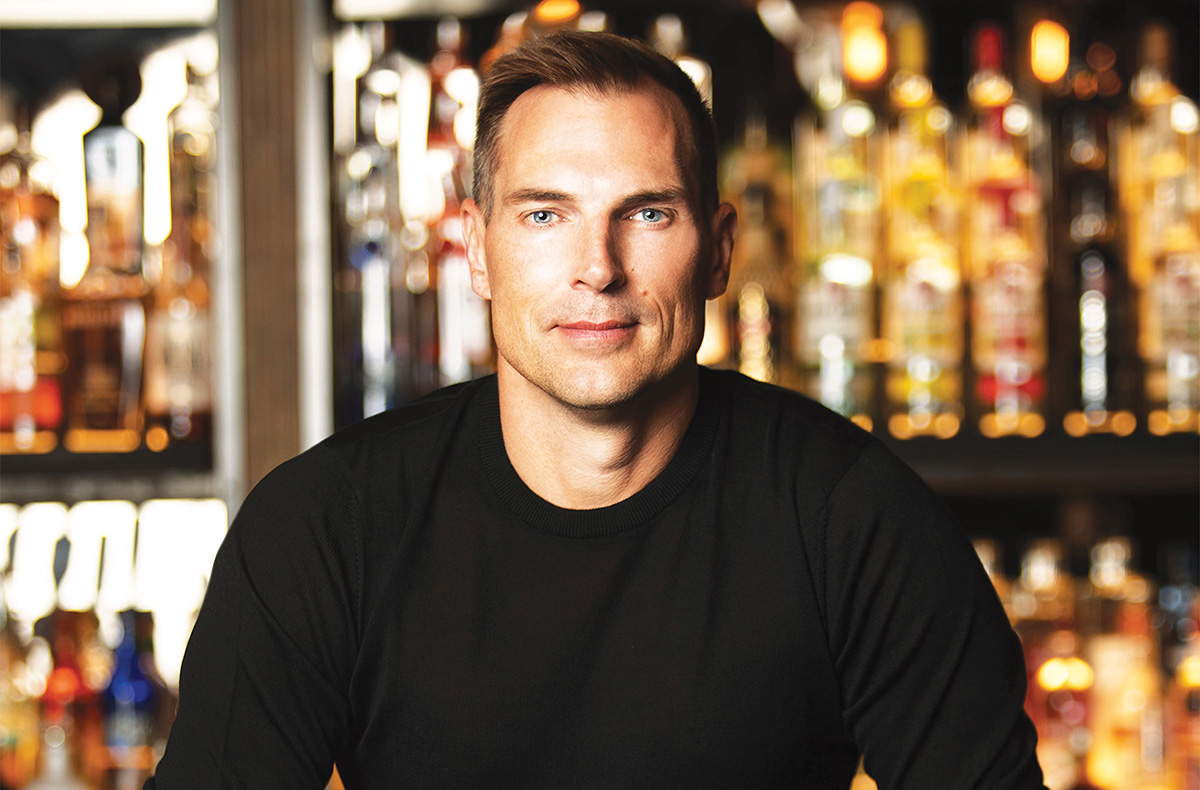
LOS ANGELES — Like the chatter about Willy Wonka and his Chocolate Factory, the West Hollywood community here started to whisper about the man who was going to be taking over the world-famous Abbey, a landmark in Los Angeles’s queer nightlife scene. Rumors were put to rest when it was announced that entrepreneur Tristan Schukraft would be taking over the legacy created by Abbey founder David Cooley. All eyes are on him.
For those of us who were there for the re-opening of The Abbey, when the torch was officially passed, all qualms about the new regime went away as it was clear the club was in good hands and that the spirit behind the Abbey would forge on. Cher, Ricky Martin, Bianca del Rio, Jean Smart, and many other celebrities rubbed shoulders with veteran patrons, and the evening was magical and a throwback to the nightclub atmosphere pre-COVID.
The much-talked-about purchase of the Abbey was just the beginning for Schukraft. It was also announced that this business impresario was set to purchase the commercial district of Fire Island, as well as projects launching in Mexico and Puerto Rico. What was he up to? Tristan sat down with the Blade to chat about it all.
“We’re at a time right now when the last generation of LGBT entrepreneurs and founders are all in their 60s and they’re retiring. And if somebody doesn’t come in and buy these places, we’re going to lose our queer spaces.”
Tristan wasn’t looking for more projects, but he recounts what happened in Puerto Rico. The Atlantic Beach Hotel was the gay destination spot and the place to party on Sundays, facing the gay beach. A new owner came in and made it a straight hotel, effectively taking away a place of fellowship and history for the queer community. Thankfully, the property is gay again, now branded as the Tryst and part of Schukraft’s portfolio with locations in Puerto Vallarta and Fire Island.
“If that happens with the Abbey and West Hollywood, it’s like Bloomingdale’s in a mall. It’s kind of like a domino effect. So that’s really what it is all about for me at this point. It has become a passion project, and I think now more than ever, it’s really important.”
Tristan is fortifying spaces for the queer community at a time when the current administration is trying to silence the LGBTQ+ community. The timing is not lost on him.
“I thought my mission was important before, and in the last couple of months, it’s become even more important. I don’t know why there’s this effort to erase us from public life, but we’ve always been here. We’re going to continue to be here, and it brings even more energy and motivation for me to make sure the spaces that I have now and even additional venues are protected going in the future.”
The gay community is not always welcoming to fresh faces and new ideas. Schukraft’s takeover of the Abbey and Fire Island has not come without criticism. Who is this man, and how dare he create a monopoly? As Schukraft knows, there will always be mean girls ready to talk. In his eyes, if someone can come in and preserve and advance spaces for the queer community, why would we oppose that?
“I think the community should be really appreciative. We, as a community, now, more than ever, should stand together in solidarity and not pick each other apart.”
As far as the Abbey is concerned, Schukraft is excited about the changes to come. Being a perfectionist, he wants everything to be aligned, clean, and streamlined. There will be changes made to the DJ and dance booth, making way for a long list of celebrity pop-ups and performances. But his promise to the community is that it will continue to be the place to be, a place for the community to come together, for at least another 33 years.
“We’re going to build on the Abbey’s rich heritage as not only a place to go at night and party but a place to go in the afternoon and have lunch. That’s what David Cooley did that no others did before, is he brought the gay bar outside, and I love that.”
Even with talk of a possible decline in West Hollywood’s nightlife, Schukraft maintains that though the industry may have its challenges, especially since COVID, the Abbey and nightlife will continue to thrive and grow.
“I’m really encouraged by all the new ownership in [nightlife] because we need another generation to continue on. I’d be more concerned if everybody was still in their sixties and not letting go.”
In his opinion, apps like Grindr have not killed nightlife.
“Sometimes you like to order out, and sometimes you like to go out, and sometimes you like to order in, right? There’s nothing that really replaces that real human interaction, and more importantly, as we know, a lot of times our family is our friends, they’re our adopted family.
Sometimes you meet them online, but you really meet them going out to bars and meeting like-minded people. At the Abbey, every now and then, there’s that person who’s kind of building up that courage to go inside and has no wingman, doesn’t have any gay friends. So it’s really important that these spaces are fun, to eat, drink, and party. But they’re really important for the next generation to find their true identity and their new family.”
There has also been criticism that West Hollywood has become elitist and not accessible to everyone in the community. Schukraft believes otherwise. West Hollywood is a varied part of queer nightlife as a whole.
“West Hollywood used to be the only gay neighborhood, and now you’ve got Silver Lake and you’ve got parts of Downtown, which is really good because L.A., is a huge place. It’s nice to have different neighborhoods, and each offers its own flavor and personality.”
Staunch in his belief in his many projects, he is not afraid to talk about hot topics in the community, especially as they pertain to the Abbey. As anyone who goes to the Abbey on a busy night can attest to, the crowd is very diverse and inclusive. Some in the community have started to complain that gay bars are no longer for the gay community, but are succumbing to our straight visitors.
Schukraft explains: “We’re a victim of our own success. I think it’s great that we don’t need to hide in the dark shadows or in a hole-in-the-wall gay bar. I’m happy about the acceptance. I started Tryst Hotels, which is the first gay hotel. We’re not hetero-friendly, we’re not gay-friendly. We’re a gay hotel and everyone is welcome. I think as long as we don’t change our behavior or the environment in general at the Abbey, and if you want to party with us, the more than merrier.”
Schukraft’s message to the community?
“These are kind of dangerous times, right? The rights that we fought for are being taken away and are being challenged. We’re trying to be erased from public life. There could be mean girls, but we, as a community, need to stick together and unite, and make sure those protections and our identity aren’t erased. And even though you’re having a drink at a gay bar, and it seems insignificant, you’re supporting gay businesses and places for the next generation.”
a&e features
Creator Max Mutchnick on inspirations for ‘Mid-Century Modern’
Real-life friendships and loss inform plot of new Hulu show
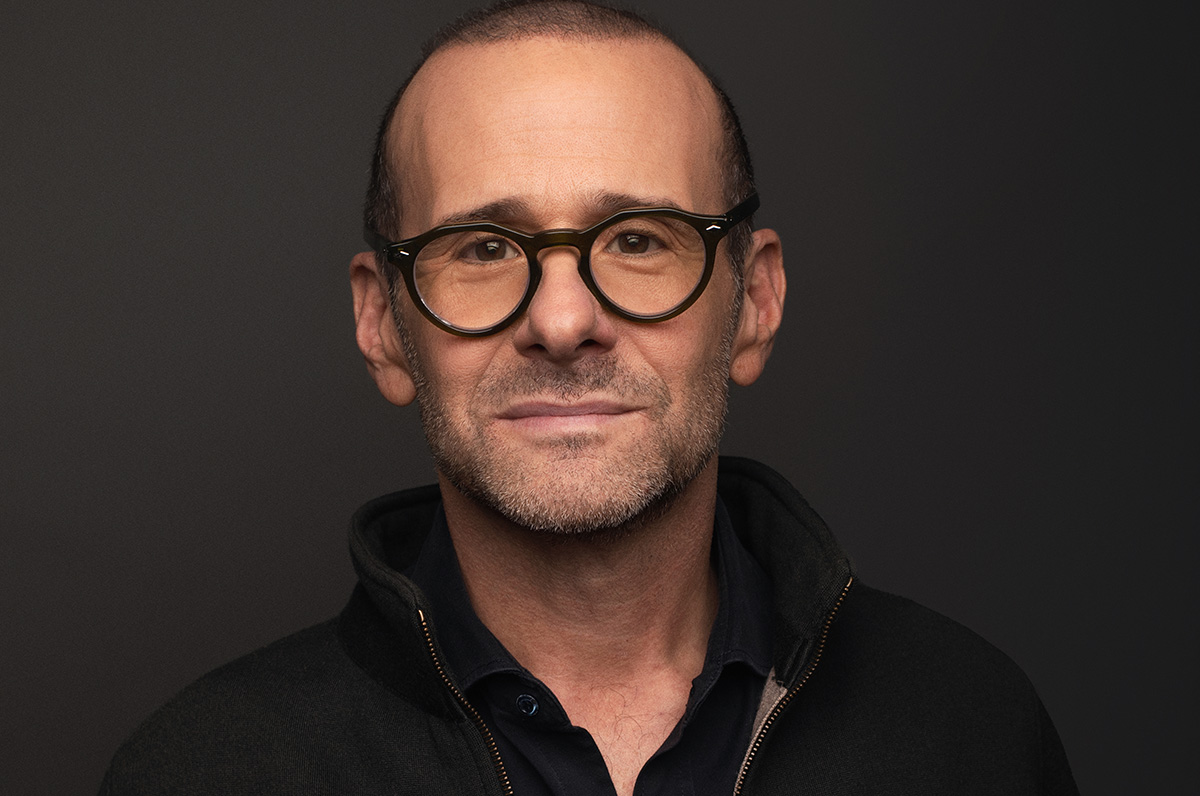
It’s been a long time – maybe 25 years when “Will & Grace” debuted – since there’s been so much excitement about a new, queer sitcom premiering. “Mid-Century Modern,” which debuted on Hulu last week, is the creation of Max Mutchnick and David Kohan, the gay men who were also behind “Will & Grace.”
Set in Palm Springs, Calif., following the death of the one of their closest friends, three gay men gather to mourn. Swept up in the emotions of the moment, Bunny (Nathan Lane) suggests that Atlanta-based flight attendant Jerry (Matt Bomer) and New York-based fashion editor Arthur (Nathan Lee Graham) move into the mid-century modern home he shares with his mother Sybil (the late Linda Lavin). Over the course of the first season’s 10 episodes, hilarity ensues. That is, except for the episode in which they address Sybil’s passing. The three male leads are all fabulous, and the ensemble cast, including Pamela Adlon as Bunny’s sister Mindy, and the stellar line-up of guest stars, such as Jesse Tyler Ferguson, Vanessa Bayer, Richard Kind, and Cheri Oteri, keep humor buzzing. Shortly before the premiere of “Mid-Century Modern,” Mutchnick made time for an interview with the Blade.
BLADE: I’d like to begin by saying it’s always a delight to speak to a fellow Emerson College alum. In ways would you say that Emerson impacted your professional and creative life?
MAX MUTCHNICK: I think Emerson was the first place that reflected back to me that my voice, my thoughts were good, and they were worth listening to. I developed a confidence at Emerson that did not exist in my body and soul. It was a collection of a lot of things that took place in Boston, but I mean we can just put it all under the Emerson umbrella.
BLADE: Before “Will & Grace,” you co-created the NBC sitcom “Boston Common,” which starred fellow Emerson alum Anthony Clark. Is it important for you to maintain those kinds of alumni relationships?
MUTCHNICK: Because Emersonians are such scrappy little monkeys and they end up being everywhere in the world, you can’t help but work with someone from Emerson at some point in your career. I’m certainly more inclined to engage with someone from Emerson once I learn that they went to my alma mater. For me, it has much more to do with history and loyalty. I don’t think of myself as one of those guys that says, “Loyalty means a lot to me. I’m someone that really leans into history.” It’s just what my life and career turned out to be. The longer I worked with people and the more often I worked with them, the safer that I felt, which means that I was more creative and that’s the name of the game. I’ve got to be as comfortable as possible so I can be as creative as possible. If that means that a person from Emerson is in the room, so be it. (Costume designer) Lori Eskowitz would be the Emerson version. And then (writer and actor) Dan Bucatinsky would be another version. When I’m around them for a long time, that’s when the best stuff comes.
BLADE: Relationships are important. On that subject, your new Hulu sitcom “Mid-Century Modern” is about the longstanding friendship among three friends, Bunny (Nathan Lane), Jerry (Matt Bomer), and Arthur (Nathan Lee Graham). Do you have a friendship like the one shared by these three men?
MUTCHNICK: I’m absolutely engaged in a real version of what we’re projecting on the show. I have that in my life. I cannot say that I’m Jerry in any way, but the one thing that we do have in common is that in my group, I’m the young one. But I think that that’s very common in these families that we create. There’s usually a young one. Our culture is built on learning from our elders. I didn’t have a father growing up, so maybe that made me that much more inclined to seek out older, wiser, funnier, meaner friends. I mean the reason why you’re looking at a mouthful of straight, white teeth is because one of those old bitches sat across from me about 25 years ago at a diner and said, “Girl, your teeth are a disaster, and you need to get that fixed immediately.” What did I know? I was just a kid from Chicago with two nickels in my pocket. But I found three nickels and I went and had new teeth put in my head. But that came from one of my dearest in the group.
BLADE: Do you think that calling “Mid-Century Modern” a gay “Golden Girls” is a fair description?
MUTCHNICK: No. I think the gay “Golden Girls” was really just used as a tool to pitch the show quickly. We have an expression in town, which is “give me the elevator pitch,” because nobody has an attention span. The fastest way you can tell someone what David (Kohan) and I wanted to write, was to say, “It’s gay Golden Girls.” When you say that to somebody, then they say, “OK, sit down now, tell me more.” We did that and then we started to dive into the show and realized pretty quickly that it’s not the gay “Golden Girls.” No disrespect to the “Golden Girls.” It’s a masterpiece.
BLADE: “Mid-Century Modern” is set in Palm Springs. I’m based in Fort Lauderdale, a few blocks south of Wilton Manors, and I was wondering if that gay enclave was ever in consideration for the setting, or was it always going to be in Palm Springs?
MUTCHNICK: You just asked a really incredible question! Because, during COVID, Matt Bomer and I used to walk, because we live close by. We had a little walking group of a few gay gentlemen. On one of those walks, Matt proposed a comedy set in Wilton Manors. He said it would be great to title the show “Wilton Manors.” I will tell you that in the building blocks of what got us to “Mid-Century Modern,” Wilton Manors, and that suggestion from Matt Bomer on our COVID walks, was part of it.
BLADE: Is Sybil, played by the late Linda Lavin, modeled after a mother you know?
MUTCHNICK: Rhea Kohan (mother of David and Jenji). When we met with Linda for the first time over Zoom, when she was abroad, David and I explained to her that this was all based on Rhea Kohan. In fact, some of the lines that she (Sybil) speaks in the pilot are the words that Jenji Kohan spoke about her mother in her eulogy at the funeral because it really summed up what the character was all about. Yes, it’s very much based on someone.
BLADE: The Donny Osmond jokes in the second episode of “Mid-Century Modern” reminded me of the Barry Manilow “fanilows” on “Will & Grace.” Do you know if Donny is aware that he’s featured in the show?
MUTCHNICK: I don’t. To tell you the truth, the “fanilow” episode was written when I was not on the show. I was on a forced hiatus, thanks to Jeff Zucker. That was a show that I was not part of. We don’t really work that way. The Donny Osmond thing came more from Matt’s character being a Mormon, and also one of the writers. It’s very important to mention that the writing room at “Mid-Century Modern,” is (made up of) wonderful and diverse and colorful incredible humans – one of them is an old, white, Irish guy named Don Roos who’s brilliant…
BLADE: …he’s Dan Bucatinsky’s husband.
MUTCHNICK: Right! Dan is also part of the writing room. But I believe it was Don who had a thing for Donny, and that’s where it comes from. I don’t know if Donny has any awareness. The only thing I care about when we turn in an episode like that is I just want to hear from legal that we’re approved.
BLADE: “Mid-Century Modern” also includes opportunities for the singers in the cast. Linda Lavin sang the Jerome Kern/Ira Gershwin tune “Long Ago (And Far Away)” and Nathan Lane and the guys sang “He Had It Coming” from “Chicago.” Was it important to give them the chance to exercise those muscles?
MUTCHNICK: I don’t think it was. I think it really is just the managers’ choice. David Kohan and I like that kind of stuff, so we write that kind of stuff. But by no means was there an edict to write that. We know what our cast is capable of, and we will absolutely exploit that if we’re lucky enough to have a second season. I have a funky relationship with the song “Long Ago (And Far Away).” It doesn’t float my boat, but everybody else loved it. We run a meritocracy, and the best idea will out. That’s how that song ended up being in the show. I far prefer the recording of Linda singing “I’ll Be Seeing You” over her montage in episode eight, “Here’s To You, Mrs. Schneiderman.” We were just lucky that Linda had recorded that. That recording was something that she had done and sent to somebody during COVID because she was held up in her apartment. That’s what motivated her to make that video and send it. That’s how we were able to use that audio.
BLADE: Being on a streaming service like Hulu allows for characters to say things they might not get away with on network TV, including a foreskin joke, as well as Sybil’s propensity for cursing.
MUTCHNICK: And the third line in the show is about him looking like a “reluctant bottom.” I don’t think that’s something you’re going to see on ABC anytime soon. David and I liked the opportunity to open up the language of this show because it might possibly open the door to bringing people…I’m going to mix metaphors…into the tent that have never been there before. A generation that writes off a sitcom because that language and that type of comedy isn’t the way that they sound. One of the gifts of doing this show on Hulu is that we get to write dialogue that sounds a little bit more like you and I sound. As always, we don’t want to do anything just to do it.
BLADE: It didn’t feel that way.
MUTCHNICK: It’s there when it’s right. [Laughs] I want to have a shirt made with Linda’s line, as her mother always used to say, “Time is a cunt.”
BLADE: “Mid-Century Modern” also utilizes a lot of Jewish humor. How important is it for you to include that at this time when there is a measurable rise in anti-Semitism?
MUTCHNICK: I think it’s important, but I don’t think it’s the reason why we did it. We tried very hard to not write from a place of teaching or preaching. We really are just writing about the stuff that makes us laugh. One of the things that makes something better and something that you can invest in is if it’s more specific. We’re creating a character whose name is Bunny Schneiderman and his mother’s name is Sybil and they made their money in a family-run business, it gets Jewy, and we’re not going to shy away from it. But we’re definitely not going to address what’s going on in the world. That doesn’t mean I don’t find it very upsetting, but I’m writing always from the point of view of entertaining the largest number of people that I can every week.
BLADE: “Mid-Century Modern” has a fantastic roster of guest stars including Jesse Tyler Ferguson, Vanessa Bayer, Billie Lourd, Cheri Oteri, Richard Kind, Rhea Perlman, and Judd Hirsch. Are there plans to continue that in future seasons?
MUTCHNICK: Yes. As I keep saying, if we’re so lucky that we get to continue, I don’t want to do “The Love Boat.” Those are fine comic actors, so I don’t think it feels like that. But if we get to keep going, what I want to do is broaden the world because that gives us more to write about. I want to start to introduce characters that are auxiliary to the individuals. I want to start to meet Arthur’s family, so we can return to people. I want to introduce other neighbors, and different types of gay men because we come in so many different flavors. I think that we should do that only because I’m sure it’s what your life is and it’s what my life is. I’ve got a lot of different types. So, yes, we will be doing more.
BLADE: Finally, Linda Lavin passed away in December 2024, and in a later episode, the subject of her character Sybil’s passing is handled sensitively, including the humorous parts.
MUTCHNICK: We knew we had a tall order. We suffered an incredible loss in the middle of making this comedy. One of the reasons why I think this show works is because we are surrounded by a lot of really talented people. Jim Burrows and Ryan Murphy, to name two. Ryan played a very big role in telling us that it was important that we address this, that we address it immediately. That we show the world and the show goes on. That wasn’t my instinct because I was so inside the grief of losing a friend, because she really was. It wasn’t like one of those showbizzy-type relationships. And this is who she was, by the way, to everybody at the show. It was the way that we decided to go. Let’s write this now. Let’s not put this at the end of the season. Let’s not satellite her in. Let’s not “Darren Stevens” the character, which is something we would never do. The other thing that Jim Burrows made very clear to us was the import of the comedy. You have to write something that starts exactly in the place that these shows start. A set comedy piece that takes place in the kitchen. Because for David and me, as writers, we said we just want to tell the truth. That’s what we want to do with this episode and that’s the way that this will probably go best for us. The way that we’ve dealt with grief in our lives is with humor. That is the way that we framed writing this episode. We wanted it to be a chapter from our lives, and how we experience this loss and how we recover and move on.
-

 El Salvador4 days ago
El Salvador4 days agoGay Venezuelan makeup artist remains in El Salvador mega prison
-
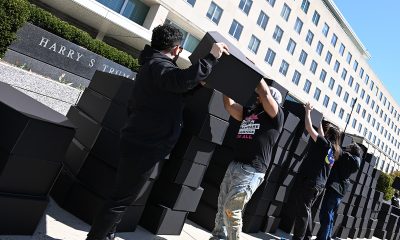
 State Department3 days ago
State Department3 days agoHIV/AIDS activists protest at State Department, demand full PEPFAR funding restoration
-
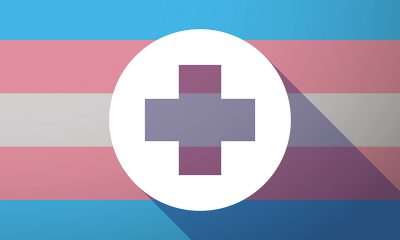
 Opinions5 days ago
Opinions5 days agoScience must not be a weapon against trans people
-

 Maryland5 days ago
Maryland5 days agoMd. schools plan to comply with federal DEI demands

